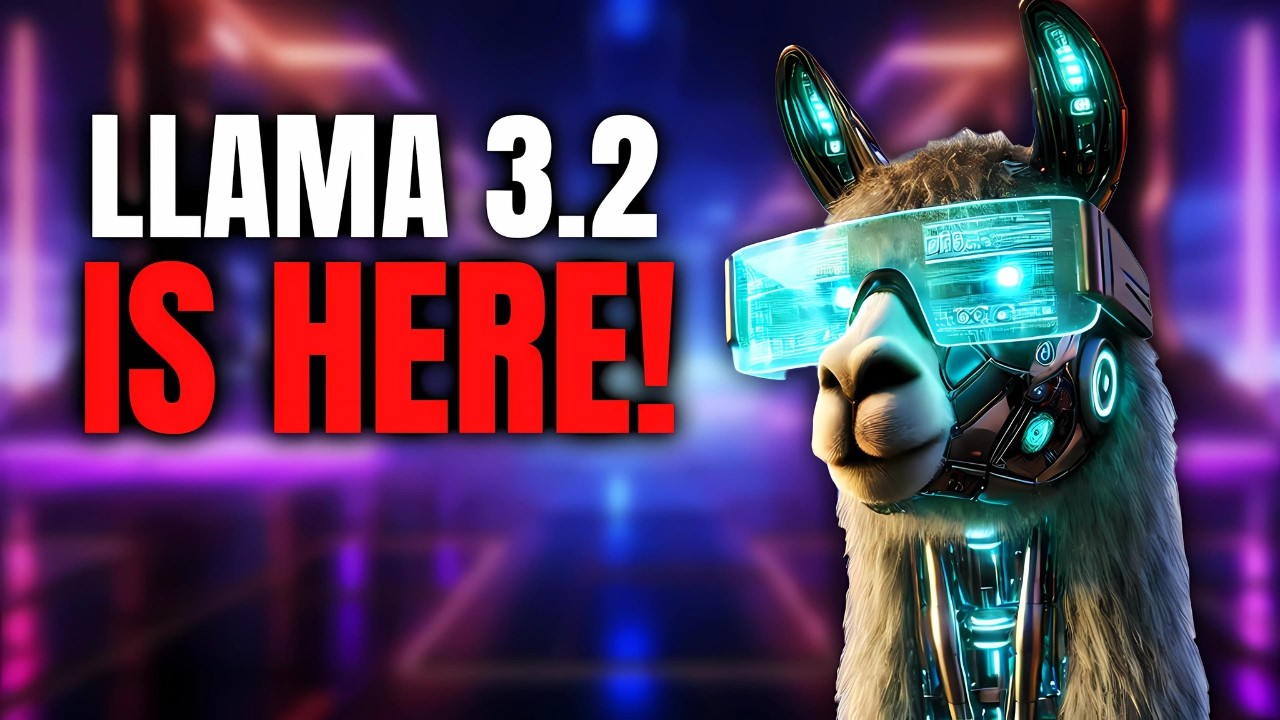The video announces the release of Llama 3.2 by Meta, which introduces vision capabilities alongside text processing, available in both large (11 billion and 90 billion parameters) and smaller (1 billion and 3 billion parameters) models optimized for edge devices. It highlights the model’s impressive performance benchmarks in image understanding and text tasks, showcasing a significant advancement in open-source AI technology.
The video discusses the recent release of Llama 3.2 by Meta, which introduces significant advancements over its predecessor, Llama 3.1. The most notable feature of Llama 3.2 is its vision capabilities, allowing the model to process and understand images in addition to text. The new model comes in two sizes: an 11 billion parameter version and a 90 billion parameter version, both of which serve as drop-in replacements for the previous text-only models. This means that existing users can integrate the new models without needing to modify their code.
In addition to the larger vision-capable models, Meta has also released smaller text-only models with 1 billion and 3 billion parameters, specifically designed for edge devices. These models are optimized for performance on devices like smartphones and IoT devices, reflecting a trend towards pushing AI compute capabilities to the edge rather than relying solely on cloud-based solutions. The smaller models are pre-trained and instruction-tuned, making them ready for immediate deployment in various applications.
The video highlights the performance benchmarks of Llama 3.2, showcasing its competitive edge against other models in the same category. The smaller models, despite their size, demonstrate impressive capabilities in tasks such as summarization and instruction following. The larger vision-enabled models also show strong performance in image understanding tasks, outperforming other closed models in various benchmarks.
The integration of vision capabilities into Llama 3.2 required a new model architecture that combines image and language processing. This was achieved through a series of cross-attention layers that align image representations with language representations, allowing the model to reason about images and respond to natural language queries. The training process involved using synthetic data generation and leveraging the capabilities of Llama 3.1 to enhance the performance of the smaller models.
The video concludes with a promise of future testing videos that will explore both the text and vision capabilities of Llama 3.2 in greater detail. The presenter expresses enthusiasm for the advancements made by Meta and emphasizes the importance of on-device AI compute. Overall, Llama 3.2 represents a significant step forward in the development of open-source AI models, providing developers with powerful tools for building applications that can operate efficiently on a variety of devices.
